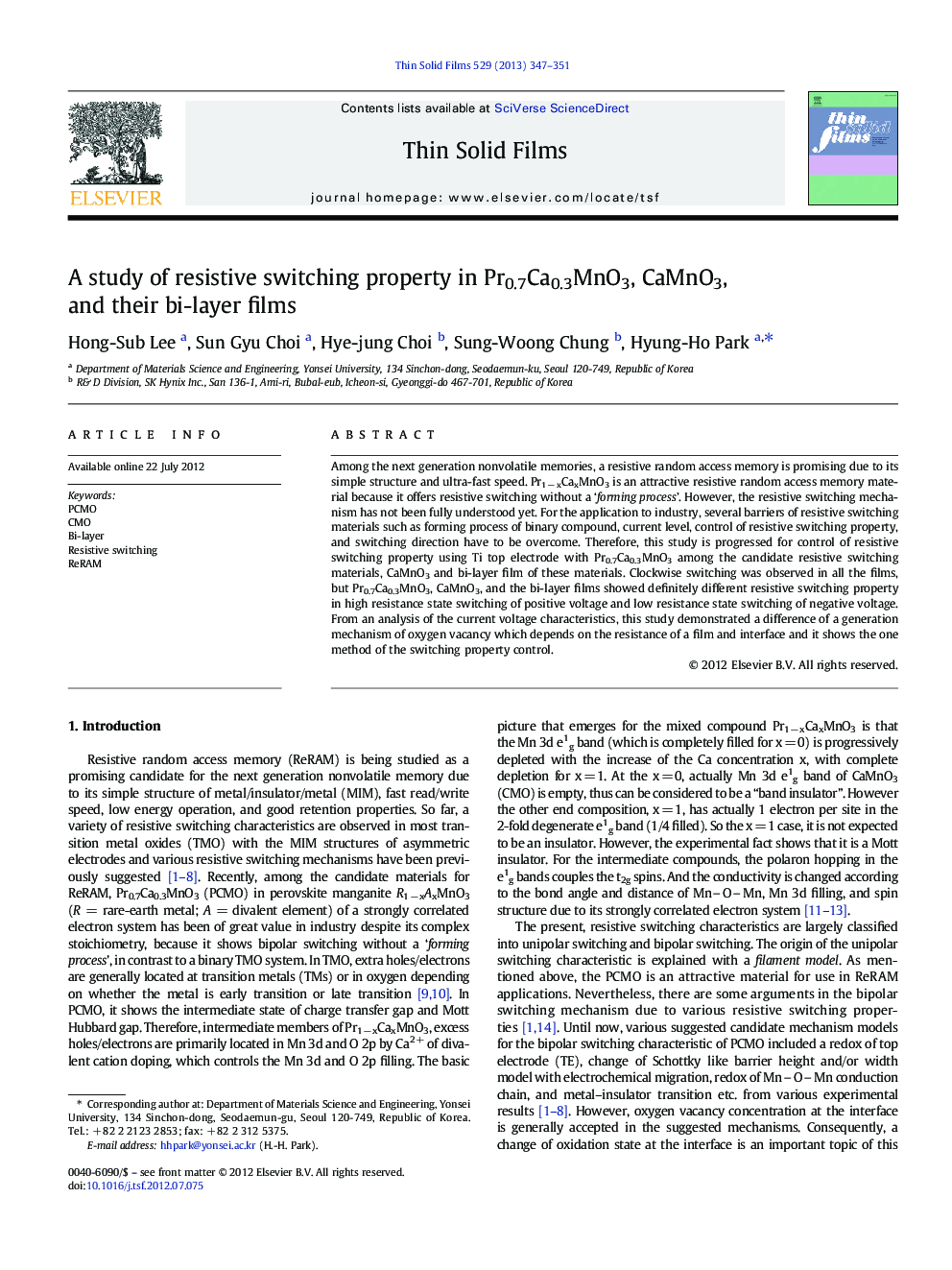| Article ID | Journal | Published Year | Pages | File Type |
|---|---|---|---|---|
| 1666835 | Thin Solid Films | 2013 | 5 Pages |
Among the next generation nonvolatile memories, a resistive random access memory is promising due to its simple structure and ultra-fast speed. Pr1 − xCaxMnO3 is an attractive resistive random access memory material because it offers resistive switching without a ‘forming process’. However, the resistive switching mechanism has not been fully understood yet. For the application to industry, several barriers of resistive switching materials such as forming process of binary compound, current level, control of resistive switching property, and switching direction have to be overcome. Therefore, this study is progressed for control of resistive switching property using Ti top electrode with Pr0.7Ca0.3MnO3 among the candidate resistive switching materials, CaMnO3 and bi-layer film of these materials. Clockwise switching was observed in all the films, but Pr0.7Ca0.3MnO3, CaMnO3, and the bi-layer films showed definitely different resistive switching property in high resistance state switching of positive voltage and low resistance state switching of negative voltage. From an analysis of the current voltage characteristics, this study demonstrated a difference of a generation mechanism of oxygen vacancy which depends on the resistance of a film and interface and it shows the one method of the switching property control.
► Control of resistive switching property by buffer layers of different resistance ► Dependence of the oxygen vacancy generation on the film and interface resistance ► Resistive switching property of Pr1 − xCaxMnO3/CaMnO3 bi-layer films
